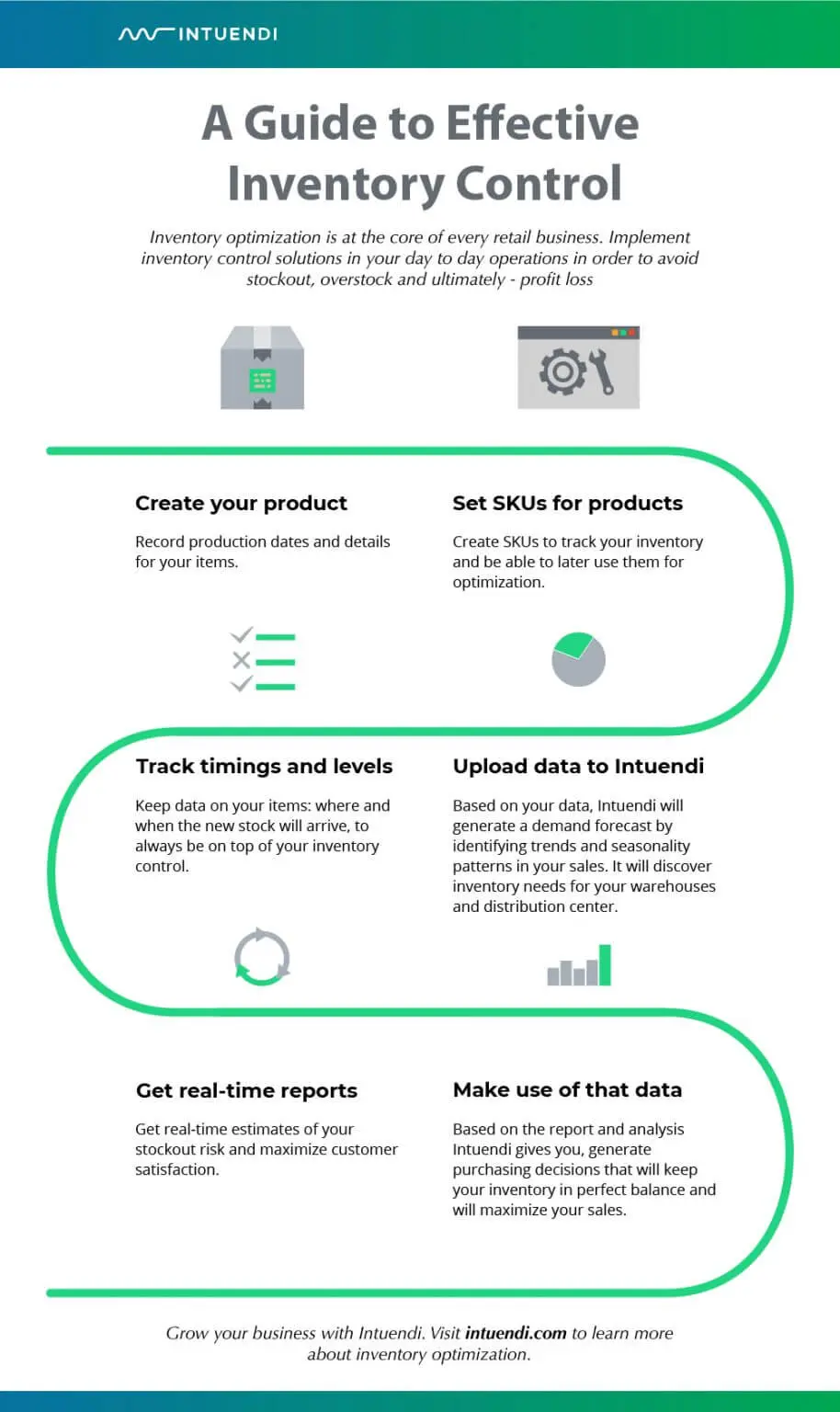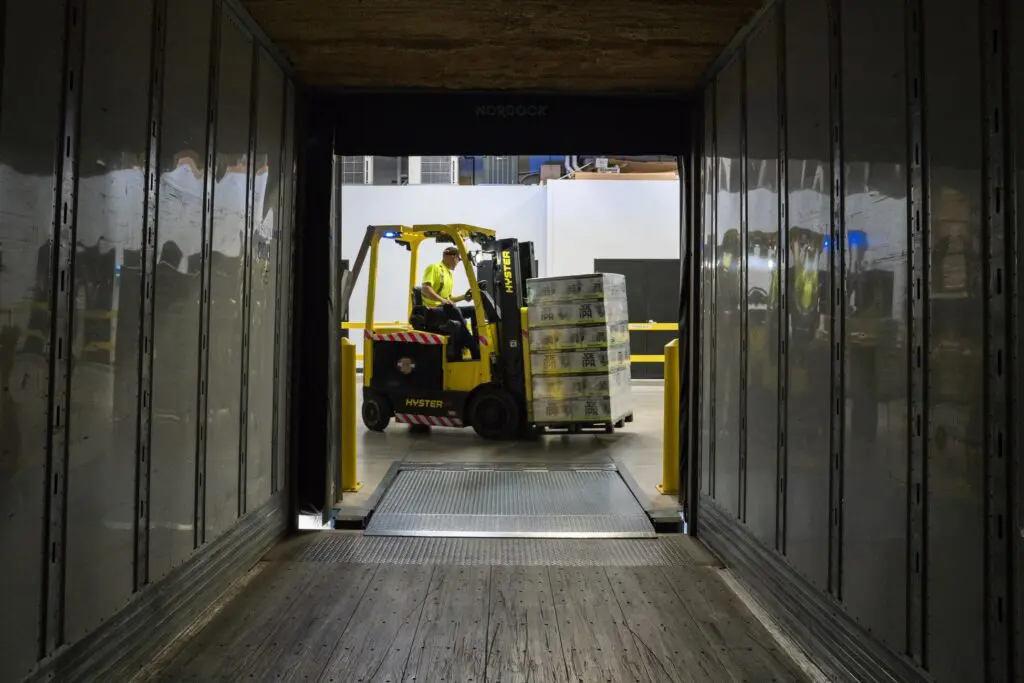The fear of losing revenue due to poor stock management, limited inventory visibility, and running into overstocking or stock-outs is one that all companies face along their supply chain. In order to mitigate any of the aforementioned issues, it is, therefore, of utmost importance that a company places strict and effective inventory control strategies, solutions, tools, and systems.
What is Inventory Control?
Inventory control is the monitoring and managing of all procedures within a warehouse, or across different locations, that work to ensure the right amount of stock is available in the right place, at the right time. It also ensures that companies are keeping the optimal amount of inventory on hand, monitoring the movement, storage, and usage of these products. Inventory control takes hold of processes such as managing the flow of goods, ordering and storing responsibilities, and tracking inventory levels. Without an accurate and reliable inventory control system set in place, businesses make themselves vulnerable to loss of efficiency, loss of revenue, and therefore, a loss of customer satisfaction.
It is important to not confuse inventory control with inventory management. They are sometimes used interchangeably, even though there are slight differences between the two terms: the former mostly refers to the activity of keeping track of the stock available in the warehouse and the way items are stored; the latter involves the estimates of the reorder points, the economic order quantity (EOQ, the order quantity that minimizes the total holding costs and ordering costs) and the replenishment actions that you have to perform in order to satisfy the future demand.
What is the Function of an Inventory Control System?
An inventory control system is a set of tools, processes, and software designed to track and manage inventory efficiently. Implementing an inventory or stock control system can help your business optimize its stock levels, prevent out-of-stock events, avoid excess inventory, streamline operations, and improve overall profitability by providing valuable insights and tools into managing stock more efficiently. Let us look at how:
Optimizing stock levels: By analyzing historical data, sales trends, and customer demand patterns, businesses can set appropriate reorder points and reorder quantities. This helps ensure that they maintain sufficient stock to meet customer demand while minimizing the carrying costs associated with excess inventory. Demand forecasting plays a vital role in controlling one’s inventory. Fun fact: Intuendi’s expertise lies in accurate demand forecasting software and inventory optimization software!
Forecasting: Besides the reorder point definition, the predominant challenge in inventory control is to deciding how much to order. The final goal of inventory management is ensuring that you will never run out of popular items. Even big companies like Nike, Walmart or BestBuy experience stock-out problems due to a failure in their inventory management processes. These failures cause not only lost sales, but they also affect their customer loyalty rates, bringing great economic effects. The demand forecasting process is vital for any successful inventory control strategy: the insights produced as a result of analyzing demand data are fundamental for estimating the amount of stock that will match your customer demands while maintaining your inventory costs low and your investments profitable.
Preventing stock-outs: Stock-outs occur when businesses run out of a particular item, leading to missed sales opportunities and dissatisfied customers. Inventory control systems help prevent stock-outs by providing real-time visibility into inventory levels. With accurate inventory tracking and automated reorder triggers, businesses can use automation software to proactively replenish stock before it reaches critically low levels ensuring uninterrupted availability of products. The best cure is always prevention!
Avoiding excess inventory: The opposite of stock-outs, excess inventory ties up capital, incurs storage costs and increases the risk of obsolescence or spoilage. Inventory control systems help prevent this by providing insights into sales trends, demand forecasting, and lead times. By aligning their replenishment cycles with demand fluctuations, businesses can avoid overstocking and the carrying costs associated with it.
Streamlining operations: Automating management processes provide features such as barcode scanning, real-time tracking, and automated reorder notifications. By reducing manual data entry with more streamlined and automated operations, errors are minimized, accuracy is improved, and businesses can enhance operational efficiency through saving time and allocating resources more effectively.
Improving overall profitability: Making a profit through increased customer satisfaction should sit at the heart of every company. Efficient, streamlined inventory control systems can help to ensure that sales opportunities are not missed, and that improved productivity brings cost savings along with it. Through the minimization of excess inventory, businesses can free up working capital for other investments. Above this and more importantly, by aligning inventory levels with customer demand, companies are additionally able to enhance customer satisfaction and loyalty, ultimately driving profitability.
Monitoring: Companies rely on different solutions for monitoring the inventory levels in order to understand what there is in their warehouse and when the stock enters and exits. They also use solutions to help assess the value and costs of their current assets. Solutions can include spreadsheets, or more reliable inventory management tools that provide complete tracking for each item stored in the warehouse. The more integration and automation a system provides, the less paperwork and mistakes there will be during the activity flow.
Timing: Once your company has the tracking system in place, it’s time to figure out when to order a new stock for your items. Some common methods involve the definition of a threshold of minimum stock that triggers a new replenishment once the available stock for a product reaches a pre-set minimum level. More sophisticated methods define a dynamic minimum stock, or reorder point, by taking into account the variability of the sales history and the future demand for each product. Of course, such type of real-time analysis is far more reliable than a static definition of the minimum stock simply based on experience or rules of thumb.
The infographic below depicts all functions of Inventory Control in one, concise explanation.

How can we Control Inventory?
Time for a re-cap! We have defined what inventory control is, as well as its various functions. Let us build on this knowledge by dissecting various tips and strategies aiding in our own inventory control:
- Forecasting demand: Mentioned a few times already, with a link provided to an in-depth Intuendi article, accurate demand forecasting analyses historical sales data, market trends, and other relevant factors that businesses can use to forecast future demand for their products. Implementing a solid demand forecasting strategy with powerful software provides information that helps in setting appropriate reorder quantities and identifying potential out-of-stock or overstocking situations.
- Setting reorder points and safety stock levels: The term, ‘reorder point,’ has been mentioned more than once throughout this article, so let us define this notion! Reorder points indicate when it is time to reorder a product. By considering lead times, demand variability, and desired service levels, businesses can set reorder points to ensure they replenish inventory before it runs out. Safety stock levels act as additional buffer stock maintained to address unforeseen demand fluctuations or supply chain disruptions.
- Employing inventory management software: Providing comprehensive tools and features to automate and streamline inventory control processes and systems, IM software provides solutions through various features, minimizing human error, and reducing labor costs. Software helps simplify and centralize inventory control tasks, improving efficiency and accuracy.
- Conducting regular audits: Not everything can be completed through the use of AI, automation and software, which is why we recommend regular physical inventory audits! By comparing actual stock counts with recorded quantities provided by the inventory control systems and software’s data, businesses can identify discrepancies, address inaccuracies, assess viability of software systems, and maintain data integrity. Audits also help identify obsolete or slow-moving items, enabling businesses to take appropriate action.
What are the Three Inventory Control Systems?
Periodic Review System: This inventory control system involves checking inventory levels at predetermined intervals and placing orders to replenish stock based on these reviews.

Perpetual Inventory System: This system, differing from the previous, relies on real-time tracking of inventory based on electronic records rather than physical counts of inventory. It starts with a physical audit of stock, and then updates stock levels with each transaction, providing immediate visibility into stock availability.
Just-in-Time (JIT) System: With the ultimate aim of minimizing inventory holding costs and running into excess inventory issues, JIT and lean inventory practices ensure that goods are received as close as possible to the time when they are actually needed. Through allowing real-time visibility into inventory levels, helps in streamlining operations, improving cash flow, and minimizes waste.
Why is Inventory Control Important?
Inventory control’s greatest benefit manifests itself in the form of reducing and saving costs, by averting businesses from the threats of mismanaged inventory levels. Through implementing strategies, systems and software to help monitor inventory levels, stock controls provides real-time visibility into stock counts and inventory levels, alerting businesses to reorder and replenish. Added advantages inventory control brings is improved customer satisfaction, increased efficiency, and enhanced decision-making. We encourage readers to continue their research into the best inventory control systems for their own businesses but remember, accurate forecasting is essential for effective inventory control.






